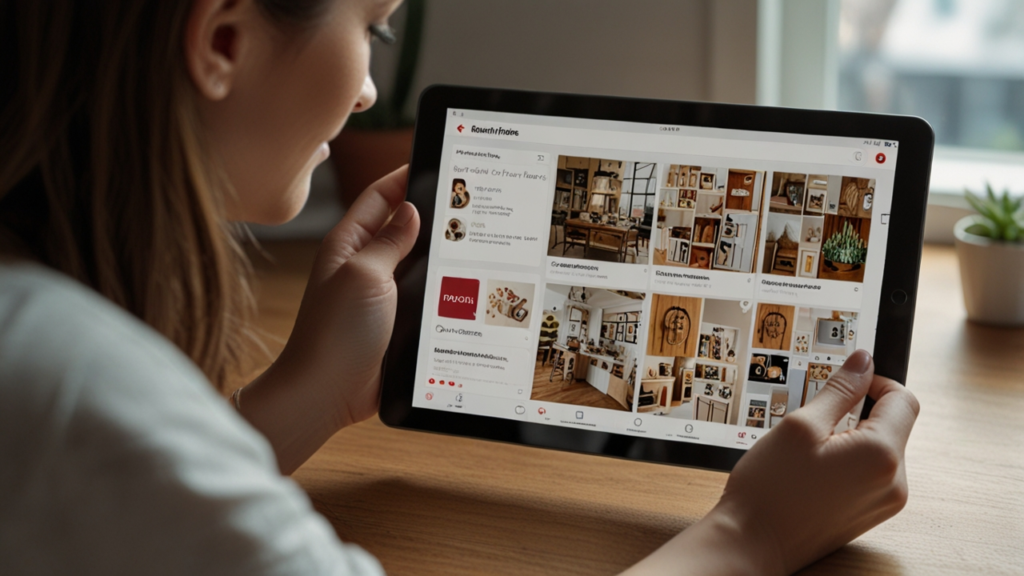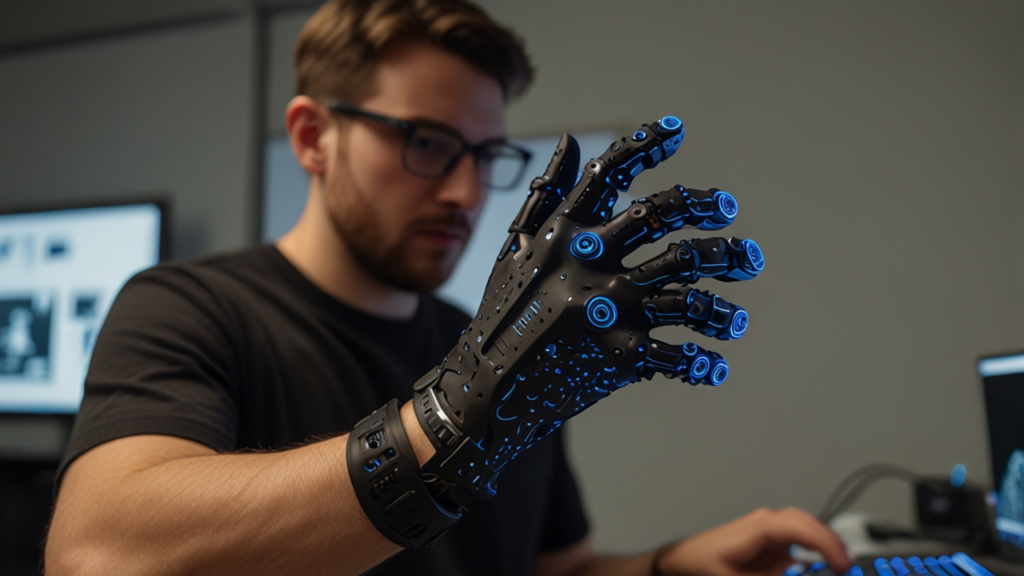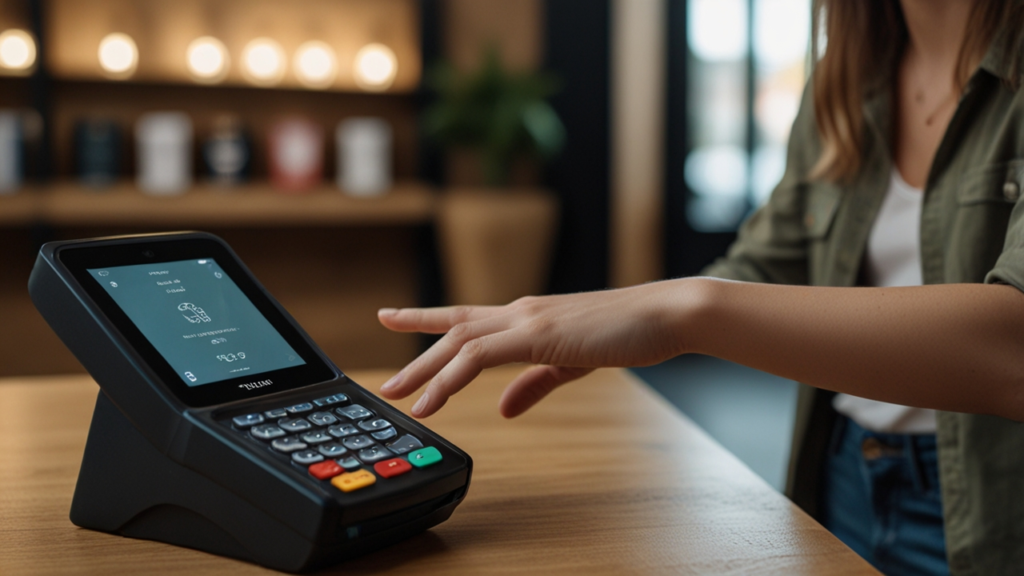Pinterest Evolution 2025
The digital world has witnessed tremendous changes over the past decade, and one platform that has evolved rapidly in this dynamic landscape is Pinterest. Founded as a creative space for users to collect and share inspiration, Pinterest continues to revolutionize the way ideas are discovered and curated. Its journey from a simple image-sharing site to a global inspiration hub is nothing short of remarkable.
In this article, we delve into the rich history, innovative technologies, and future trends of Pinterest. We explore how this platform has evolved over the years to become a leading visual discovery engine that drives trends across diverse categories such as fashion, home décor, food, and travel. Every piece of data, case study, and insight shared is backed by reputable sources to help you understand its impact.
Whether you are a long-time user or new to the concept, join us as we break down Pinterest’s evolution, its technological breakthroughs, and what the future might hold. For more information on the latest mobile trends, feel free to explore more on Mobile & Gadgets.
Table of Contents
- Introduction to Pinterest
- Evolution and History of Pinterest
- How Visual Discovery Enhances Pinterest
- Inspiration Platform Systems and Their Applications
- Real-World Case Studies of Pinterest
- Idea Curation in Modern Pinterest Solutions
- Future Trends: Creative Collection and Beyond
- Design Beyond Boundaries
- FAQ
- Conclusion
Introduction to Pinterest
Overview and Mission
Pinterest emerged as a platform that put creative inspiration at the forefront. Originally founded in December 2009 by Ben Silbermann, Paul Sciarra, and Evan Sharp in San Francisco, this service was designed to act as a visual discovery engine. Its primary mission—to empower users to capture, organize, and share ideas—continues to resonate with a diverse audience worldwide.
The platform allowed users to “pin” images and videos onto thematic “boards,” evolving into a unique format for idea curation. Sharing inspiration across categories such as fashion, home décor, food, and travel helped Pinterest set itself apart from more text-based social networks. This strategic focus enabled Pinterest to grow its user base significantly, ultimately achieving over 522 million monthly active users in early 2025.
You might ask: How can a simple idea-sharing site transform into a global inspiration hub? Think about the impact that creative collaboration can have on cultural trends. For more insights on emerging technology trends, check out Cutting-Edge Technologies.
Foundation and Growth
From its inception, Pinterest was designed to be more than just a social network—it was envisioned as a space where users could assemble a digital scrapbook of their ideas. This vision facilitated a user-friendly environment where creativity and innovation flourished simultaneously.
The growth trajectory is impressive. Pinterest rapidly expanded its offering by launching mobile apps for both iOS and Android, increasing accessibility for millions of users. Strategic enhancements such as the “Pin It” button allowed users to save content from around the web, making it easier to integrate discoveries from various online sources.
Reflect on your digital collections: How do you archive inspiration from everyday encounters? The platform’s dedication to visual curation continues to inspire ways to document creativity practically. Have you experienced the impact of digital organization in your creative workflow?
Evolution and History of Pinterest
Milestones in Growth
Pinterest’s evolution is rich with milestones that underscore its innovative journey. In 2010, just months after its public launch, Pinterest rapidly built a community of users who embraced the concept of pinning images to thematic boards. These pins were more than digital bookmarks—they represented personal collections of inspiration sympathetic to emerging trends.
A pivotal moment occurred when Pinterest introduced the “Pin It” button. This feature enabled users to effortlessly save creative content from any website, expanding the platform’s influence far beyond its native ecosystem. In 2019, Pinterest’s success was cemented by its public debut on the New York Stock Exchange (NYSE: PINS), marking its arrival as a major internet company.
With its continued focus on innovation, Pinterest leverages AI-driven features like Lens for advanced visual discovery and “Shop the Look” for direct e-commerce opportunities. Have you noticed how these technologies shape your online shopping experience? For a detailed study on platform evolution, visit Wikipedia.
Technological Advancements
Advanced technologies, primarily powered by machine learning and computer vision, play a vital role in shaping Pinterest’s capabilities. Using programming languages such as Python, Java, and Go, the platform has implemented algorithms that power content recommendations and visual searches.
The introduction of tools like Pinterest Lens has revolutionized how users find similar images without relying on text-based input. This innovation employs deep learning to analyze images, providing personalized recommendations based on a user’s interests. Such technological leaps not only fuel engagement but also enhance the overall user experience.
Think about the algorithms that shape our daily digital encounters. What role do you feel AI plays in how we discover new ideas? Explore further insights on digital innovations via Gezgin Ajans.
How Visual Discovery Enhances Pinterest
Innovative Visual Discovery Tools
The visual discovery aspect of Pinterest is central to its appeal. Features such as the Pinterest browser button and the Lens tool allow users to search through images rather than keywords. This functionality provides a unique visual search that bridges inspiration with usability.
The Lens tool, for example, leverages deep learning to recognize content and context present in any image. Users simply take a photo or use an image to start a search session, leading to tailored recommendations. Such tools have fundamentally changed the way people interact with visual media online.
This shift towards intuitive, image-based discovery reinforces the platform’s value as a creative workspace. Consider: How do you normally discover new trends online? Have you explored these visual search features in your personal projects? For additional details on visual innovation, see Pinterest Tarih.
Enhancing E-commerce and Social Engagement
Pinterest’s integration of visual discovery with e-commerce creates a seamless bridge between inspiration and purchase. The “Shop the Look” feature tags products within images so that users can go directly from inspiration to buying. This integration is particularly useful for brands that want to translate visual appeal into tangible sales.
By leveraging AI, Pinterest personalizes shopping experiences for its users, making it both a discovery tool and a modern marketplace. Such enhancements have led to significant increases in website traffic and conversion rates for many businesses.
Have you ever clicked on an image and found yourself exploring an entire collection of similar products? This approach transforms shopping into an engaging and interactive journey. What steps would you take to improve your online shopping experience?
Inspiration Platform Systems and Their Applications
Integrating Creativity and Commerce
The platform’s dual focus on inspiration and commerce is a testament to its innovative design. It not only caters to creative enthusiasts but also provides robust solutions for brands looking to market their products visually. With billions of pins organized into thematic boards, Pinterest serves as a virtual showroom for ideas and products alike.
Systematic features like organized boards and curated collections ensure that content is easily accessible and highly engaging. The inherent product tagging and shoppable pins help bridge the gap between artistic inspiration and digital commerce. This integration has contributed significantly to the platform’s role as a major traffic driver for influencers and brands.
Reflect on your own digital engagements—do you prefer inspiration that leads directly to shopping, or do you enjoy simply browsing for ideas? The blend of commerce and creativity on Pinterest is a subject for continuous innovation. Discover more on the topic through Turbologo.
Real-World System Applications
Numerous brands have harnessed these systems to launch innovative marketing campaigns. Major names like IKEA, L’Oréal, and Samsung have leveraged Pinterest’s capabilities not just to showcase their aesthetics, but also to drive measurable business impact. For example, IKEA’s “Make Room for Life” campaign effectively used shoppable pins and visual search to boost both online engagement and in-store sales.
In smaller markets such as the US and Australia, home décor and craft businesses have grown by using the platform to connect directly with consumers. This case demonstrates how structured digital curation can elevate a brand’s image and drive revenue effectively.
Have you seen examples where technology transforms traditional commerce? How might you use such systems to boost your business? For additional comparative statistics, please refer to DataReportal.
Real-World Case Studies of Pinterest
Global Brand Success Stories
Case studies provide a tangible insight into how Pinterest has redefined digital marketing. Global brands, including IKEA, L’Oréal, and Samsung, have run targeted campaigns using Pinterest’s visual discovery tools. These campaigns have not only increased brand visibility but also generated significant online traffic and direct sales.
For instance, IKEA’s “Make Room for Life” initiative used shoppable pins that allowed users to visualize and purchase products effortlessly, demonstrating the dual benefit of creative inspiration and commerce. These real-world examples highlight the platform’s effectiveness in marrying aesthetics with practical outcomes.
Consider your own interactions with brands online. What marketing strategies have resonated with you? Reflect on how visually-driven campaigns can change consumer behavior and brand loyalty. Have you encountered a campaign that truly inspired you?
Comprehensive Comparison of Case Studies
| Example | Inspiration | Application/Impact | Region |
|---|---|---|---|
| IKEA Campaign | Shoppable Visuals | Increased online traffic and in-store sales | Europe |
| L’Oréal Campaign | Beauty Trends | Enhanced brand engagement | Global |
| Samsung Initiative | Innovative Tech Displays | Boosted user interaction | Asia-Pacific |
| Small Business Growth | Handcrafted Ideas | Direct e-commerce sales | North America |
| Cultural Adaptation | Local Aesthetics | Niche community building | Japan/South Korea |
User-Driven Movements and Local Success
Beyond major global brands, Pinterest has enabled grassroots movements and the success of small businesses. In regions like Australia and the United States, many small enterprises—especially in home décor and craft sectors—have flourished by using Pinterest to build their online presence. These businesses curate boards that not only inspire but also directly link to e-commerce sites.
Local trends, such as DIY projects, sustainability initiatives, and wellness routines, often spark viral popularity on Pinterest. For example, eco-friendly home projects and K-beauty routines in South Korea have seen a surge thanks to creative curation and community sharing. This bottom-up approach reflects how diverse user groups utilize the platform as a tool for both inspiration and practical application.
How has your community influenced your creative projects? Do you find that local trends often inspire bigger global movements? Have you witnessed a grassroots movement gain traction on social media?
Idea Curation in Modern Pinterest Solutions
Modern Content Organization Strategies
Idea curation on Pinterest relies on intuitive board structures and collaborative collections that help users organize large amounts of visual data. Modern digital curators make the most of Pinterest by grouping images into themed boards that reflect specific moods, trends, or project ideas. This system allows for a clean and organized display of inspiration, making it easy for users to navigate through layers of creativity.
The platform’s use of machine learning further refines this organization by delivering personalized content tailored to every user’s interests. The combination of human curation and automated suggestions is a key strength that sets modern Pinterest solutions apart from other social media platforms.
Have you ever spent time curating your own board? What techniques do you use to simplify the process of collecting inspiration? Share your thoughts on how digital content organization impacts creativity.
Community and Collaborative Curation
Collaboration is at the heart of idea curation on Pinterest. Shared boards allow groups of people to contribute to a single collection, creating a rich tapestry of inspirations from diverse perspectives. Whether it is planning an event or brainstorming for a design project, collaborative curation has become a popular feature that brings together creativity from various sources.
This feature fosters a community-driven environment where users can exchange ideas, boost each other’s creativity, and validate their aesthetic choices through collective feedback. The social aspect of sharing boards has proven invaluable in reinforcing trends and encouraging innovative thought.
Have you ever collaborated on a board with friends or colleagues? What benefits did you notice from working as a community? Reflect on your experience—does sharing ideas enhance your creative process?
Future Trends: Creative Collection and Beyond
Emerging AI and AR Innovations
Looking to the future, Pinterest is poised to enhance its platform with emerging technologies. One of the most exciting areas is the further integration of AI-powered personalization tools that will refine content delivery and improve the accuracy of visual searches. As machine learning evolves, Pinterest can offer even more contextual and dynamic recommendations based on users’ visual interactions.
Augmented reality (AR) is another groundbreaking addition that promises to transform the shopping experience. Imagine visually trying on products or exploring new home décor arrangements through AR—these innovations bridge digital inspiration with real-world practicality. By blending AI and AR, Pinterest is setting the stage for a more immersive digital experience.
How do you envision emerging technologies changing your digital interactions? Is this the future of visual curation, or do you see potential pitfalls with over-reliance on automation? Consider the possibilities as you explore the next wave of innovation.
Monetization and Creator Economy Growth
The evolution of Pinterest is closely tied to the growth of the creator economy. Enhanced monetization tools, such as affiliate linking, sponsored boards, and robust analytics, are creating new opportunities for influencers and professional curators. This approach not only validates creative outputs but also opens avenues for sustainable revenue streams.
Innovative creators are now able to blend artistic expression with business acumen, using Pinterest as a platform to reach global audiences and drive direct engagement with brands. The integration of commerce with inspiration is expected to fuel a new wave of digital entrepreneurship, setting trends that benefit both creators and consumers.
Have you ever thought about turning your creative hobby into a business? How could improved monetization tools transform digital content creation? Share your ideas on how innovation drives economic opportunities.
Design Beyond Boundaries
This section explores the fascinating world of creative problem-solving that goes beyond a conventional digital platform. Here, we discuss how design thinking and interdisciplinary collaboration have transformed how we approach innovative challenges. Instead of relying solely on technology, modern design methodologies focus on human-centered solutions that cater to diverse user needs and that foster genuine collaboration.
Creative problem-solving involves deconstructing complex issues into manageable parts. Designers now work alongside engineers, psychologists, and even sociologists to create holistic solutions that resonate on multiple levels. By emphasizing empathy, experimentation, and constant iteration, design thinking inspires ideas that push the boundaries of traditional approaches.
This process encourages creativity by merging analytical reasoning with artistic insight. For example, creative teams often use brainstorming sessions and rapid prototyping methods to explore alternative solutions. These sessions are characterized by an open exchange of ideas, where the focus is on generating a wide spectrum of possibilities before refining the best ones.
Moreover, the convergence of various disciplines under a unified design philosophy has led to innovative products that surprise and delight users. Collaborative projects have resulted in breakthrough solutions that would have been unimaginable without the merging of different perspectives. If you reflect on your own experiences, you might recall a moment when a seemingly insurmountable problem was solved by an unconventional idea.
Now, consider this: when faced with a complex challenge, how open are you to collaborating with others outside your traditional circle? Embrace diverse viewpoints and challenge established norms. The art of creative problem-solving is not just about fixing issues—it’s a continuous exploration that invites new ideas and fresh ways of thinking, inspiring us to see the world with renewed clarity.
FAQ
What is the origin of Pinterest?
Pinterest was founded in December 2009 in San Francisco by Ben Silbermann, Paul Sciarra, and Evan Sharp. Initially designed as a visual discovery platform, it has since evolved into a comprehensive tool for idea curation and inspiration that connects millions of users around the world.
How does Pinterest use visual discovery to engage users?
Pinterest incorporates advanced visual discovery tools like the Pinterest Lens and browser buttons that use machine learning algorithms to recognize images and provide personalized recommendations. These features help users discover content that aligns with their interests while also offering a seamless integration with e-commerce.
What are some key milestones in Pinterest’s evolution?
Key milestones include the launch of the “Pin It” button, the release of mobile apps for iOS and Android, the integration of advanced visual search tools such as Lens, and going public on the NYSE in 2019. Each milestone has contributed to its status as a leading visual discovery and inspiration platform.
How do brands use Pinterest to drive business growth?
Major brands like IKEA, L’Oréal, and Samsung utilize Pinterest for targeted marketing campaigns by leveraging shoppable pins and visual search tools to increase traffic and sales. The platform’s ability to merge creative inspiration with commerce has proven to be highly effective in driving engagement and revenue.
What future trends are expected to shape Pinterest?
Future trends include deeper integration of AI-powered personalization, augmented reality shopping experiences, expansion into new global markets, and enhanced monetization tools for creators. These innovations are aimed at further increasing user engagement and bridging the gap between inspiration and commerce.
Conclusion
Throughout its evolution, Pinterest has established itself as a mature and innovative platform that continually adapts to digital trends. From its humble beginnings as an idea-sharing website to a global visual discovery hub, Pinterest demonstrates remarkable progress fueled by technological innovation and creative inspiration. Its role in bridging creativity with commerce has transformed the way brands and individuals interact with visual content.
Each section of this article has showcased a facet of Pinterest’s multifaceted platform—from its historical milestones and advanced discovery tools to real-world case studies and promising future trends. As you reflect on the information provided, consider how these innovations might influence your own creative and commercial pursuits. Have you experienced the transformative power of visual discovery in your projects?
For more information or to share your thoughts on this journey, feel free to Contact. We welcome your insights and encourage you to join the conversation on how digital inspiration continues to evolve.
Discover more from Fabelo.io
Subscribe to get the latest posts sent to your email.



